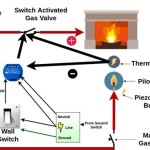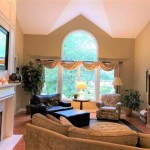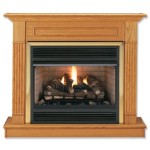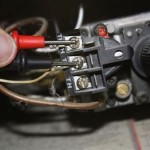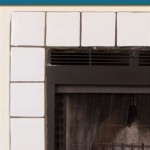Fire Glass: Enhancing Gas Fireplaces with Style and Safety
Gas fireplaces offer a convenient and efficient alternative to traditional wood-burning fireplaces. Their ease of use, clean operation, and consistent heat output make them a popular choice for homeowners. Beyond the mechanical components, the visual appeal of a gas fireplace is equally important. Fire glass has emerged as a prominent medium for enhancing the aesthetic of these fireplaces, providing a modern, customizable, and safe option compared to traditional gas logs.
Fire glass, typically made from tempered glass that is heat-resistant and non-toxic, is designed to withstand the high temperatures produced by gas flames. It comes in a myriad of colors, shapes, and sizes, allowing homeowners to personalize their fireplace to complement their interior design. The reflective properties of fire glass create a mesmerizing display of light and flame, adding depth and dimension to the fireplace while distributing heat more evenly. While offering numerous benefits, it’s important to understand the material properties, safety considerations, and maintenance procedures associated with fire glass to ensure optimal performance and longevity.
Understanding Fire Glass Composition and Properties
The fundamental characteristic of fire glass is its ability to endure extreme heat without degradation or discoloration. This resilience stems from the tempering process, which involves heating the glass to a high temperature and then rapidly cooling it. This process creates internal stresses that make the glass significantly stronger and more resistant to thermal shock compared to standard glass. The tempering process is crucial for safety, as it ensures that if the glass does break, it will shatter into small, relatively harmless pieces rather than sharp shards.
Fire glass is typically made from soda-lime glass, which is known for its durability and clarity. However, some premium fire glass products may utilize borosilicate glass, which offers even greater resistance to thermal shock and chemical corrosion. The addition of various metal oxides during the manufacturing process is responsible for the diverse range of colors available. For example, cobalt oxide produces blue hues, while chromium oxide yields green shades. These colorants are carefully selected and incorporated to ensure they remain stable at high temperatures and do not release harmful fumes.
The shape and size of fire glass pieces also contribute to its performance and aesthetic appeal. Common shapes include pebbles, diamonds, and cubes, each offering a unique light reflection pattern. Larger pieces tend to create a more dramatic flame pattern, while smaller pieces provide a more subtle and uniform glow. The size and shape should be considered in relation to the fireplace size and burner configuration to achieve the desired visual effect and ensure proper gas flow.
Safety Considerations for Fire Glass Usage
While fire glass is generally considered safe for use in gas fireplaces, several factors must be considered to mitigate potential risks. The quality of the fire glass is paramount. It is essential to purchase fire glass from reputable manufacturers who adhere to strict quality control standards. Inferior fire glass may contain impurities that can release harmful fumes when heated or may not be properly tempered, leading to premature cracking or shattering.
Proper installation is also crucial for safety. The fire glass should be evenly distributed across the burner surface, taking care not to obstruct the gas ports. Overfilling the fireplace can restrict airflow and lead to incomplete combustion, resulting in the production of carbon monoxide. It is also important to ensure that the fire glass is compatible with the type of gas used in the fireplace (natural gas or propane). Using the wrong type of fire glass can lead to corrosion or other problems.
Regular maintenance is necessary to keep the fire glass in optimal condition. Over time, soot and other deposits can accumulate on the surface of the glass, diminishing its reflectivity and potentially affecting the burner's performance. The fire glass should be cleaned periodically using a mild detergent and water. Harsh chemicals or abrasive cleaners should be avoided, as they can damage the surface of the glass. If any pieces of fire glass become cracked or chipped, they should be replaced immediately to prevent further damage and ensure safety.
Furthermore, it's imperative to adhere to the fireplace manufacturer's instructions regarding the use of fire glass. Fireplaces are designed with specific venting requirements and fuel-to-air ratios in mind, and altering the burning medium can affect these aspects. If there are discrepancies in the instructions or concerns about compatibility, a qualified fireplace technician should be consulted.
Installation and Maintenance of Fire Glass in Gas Fireplaces
The installation of fire glass is a relatively straightforward process, but it is essential to follow the manufacturer's instructions carefully. Before beginning, the gas supply to the fireplace should be turned off and the unit allowed to cool completely. The existing gas logs or other media should be removed and the burner assembly inspected for any debris or obstructions. The burner should be cleaned with a soft brush or vacuum cleaner to ensure proper gas flow.
The fire glass should be poured evenly across the burner surface, taking care to distribute it around the gas ports. The depth of the fire glass layer will depend on the size of the fireplace and the desired aesthetic effect. A general guideline is to cover the burner completely with a layer of fire glass that is approximately 1 to 2 inches deep. However, it is important not to overfill the fireplace, as this can restrict airflow and affect the burner's performance.
Once the fire glass is installed, the gas supply can be turned back on and the fireplace tested. The flame pattern should be observed to ensure that the fire glass is not obstructing the gas ports and that the flames are burning evenly. If necessary, the fire glass can be adjusted to optimize the flame pattern. After the fireplace has been used for a period of time, the fire glass should be inspected for soot or other deposits. If cleaning is required, the gas supply should be turned off and the unit allowed to cool completely. The fire glass can then be removed and washed with a mild detergent and water. After cleaning, the fire glass should be thoroughly dried before being reinstalled in the fireplace.
Preventative maintenance plays a significant role in prolonging the life and appearance of fire glass. Regular visual inspections for cracks or chips are prudent. Additionally, monitoring the color and clarity of the glass can indicate the need for cleaning. If the glass appears dull or coated with residue, it is time for a cleaning cycle. It is important to use only approved cleaning methods and products to avoid damaging the fire glass. Some manufacturers offer specialized cleaning solutions specifically designed for fire glass.
The frequency of cleaning will depend on the usage of the fireplace and the type of gas used. Propane, for example, tends to produce more soot than natural gas, requiring more frequent cleaning. Generally, cleaning the fire glass every 6 to 12 months is sufficient for most users. However, those who use their fireplaces more frequently may need to clean the glass more often.
When removing fire glass for cleaning, it’s advisable to use a container or screen to sift through it, removing any small debris or ash that may have accumulated. This simplifies the cleaning process and ensures that the glass is returned to the fireplace in its best possible condition.
In conclusion, fire glass provides a transformative aesthetic to gas fireplaces while maintaining a safe and efficient heating option. By understanding its composition, adhering to safety guidelines, and practicing proper maintenance, homeowners can enjoy the beauty and warmth of their fire glass fireplace for years to come. The initial investment in quality fire glass, combined with diligent care, proves to be a worthwhile endeavor that enhances both the visual appeal and the functionality of the gas fireplace.

Fireplace Fire Glass Installation Guide Pit Essentials

S Fireplace Stove In Paramus New Jersey Kjb Fireplaces

Fireplace Fire Glass Colors Magic Touch Mechanical

Fireplaces S Of Gas Fire Glass Designed With Affordable Glassfire

How To Clean Fire Glass

30 X 6 Stainless Steel H Style Burner Natural Gas

Fireplace Installation Instructions Diamond Fire Glass

Looking For A Great Way To Spruce Up Your Gas Burning Fireplace H Burner And Fire Glass Purchased From Ww

Studio Glass Gas Fires Gazco Built In Contemporary Fireplaces

Quarter Inch Reflective Fireglass San Diego Chimney Sweep Prefabricated Fireplace Specialists

